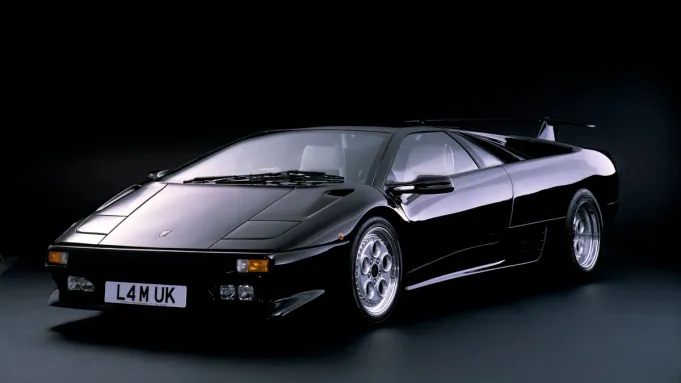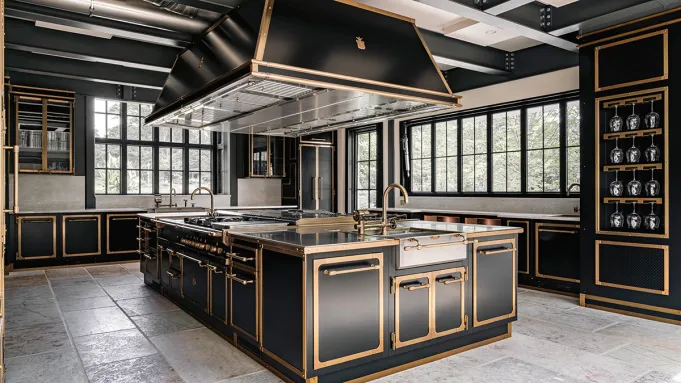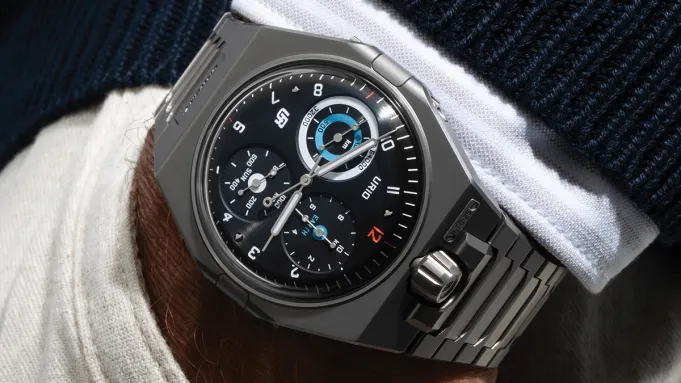
Some words don’t translate well between languages, but you know what they’re intended to infer. “Countach” has several translations from Italian, generally relating to shock and amazement. Such is the reaction to Lamborghini‘s legendary model of the same name, built from 1974 through 1990.
The Countach is a car that seems to be in a perpetually difficult mood—difficult when it comes to ingress and egress, and even more challenging to see out of, maneuver, or reverse. Some would argue that it only becomes cooperative when you show it who’s boss. The satisfaction is in mastering it.

This 1995 Diablo SE30, one of 150 examples built, sold through RM Sotheby’s last year.
Kevin Van Campenhout, courtesy of RM Sotheby’s
The Countach’s immediate successor, though, serves as a counterpoint. The Diablo, built from 1990 through 2001, has a moniker that suggests that it’s a deceitful menace. But no. The tables are turned: it’s a car that wants to bring out the devil in the driver. As far as performance, every Diablo can reach roughly 200 mph and sprint from zero to 60 mph in anywhere from 3.5 to 4.5 seconds thanks to its V-12 engine. Early cars featured a two-wheel-drive configuration and had power plants with 5.7 liters of displacement; later cars boasted four-wheel drive and a 6.0-liter mill. The latter were also perhaps more civilized, given the influence of Audi’s 1998 acquisition.
“The Diablo drives like a modern car,” says owner Giles Morse, a 43-year-old real estate investor. “There’s magic in a manual-gearbox Lamborghini V-12, a different experience to a Ferrari: more brash, visceral—the massiveness and absurdity. Everybody has a positive reaction to old Lambos.”

This 1999 Diablo VT, offered through RM Sotheby’s in 2017, is fit with a 5.7-liter V-12 delivering 529 hp.
Robert Dening, courtesy of RM Sotheby’s
Morse also sees the practicality in its collectability, noting that “Diablos are currently criminally mispriced, but you can use a Diablo and not lose money.” Case in point is his 1991 example, with approximately a little less than 22,000 miles on it, for which he paid €220,000 (roughly $257,800 at current conversion rates) after haggling.
“The Diablo is certainly the ‘new kid on the block,’” says Alessandro Farmeschi, head of Lamborghini’s classic and restoration wing, Polo Storico. “Diablo, I believe, was the next chapter as a continuation of design language with Countach. Diablo has a continuation in terms of unmistakable design you can recognize from far away.” And more Diablos are finding their way into Polo Storico’s workshop for restoration and certification as authentic.

According to the RM Sotheby’s lot description for this car, the 1999 model year of the Diablo VT featured a redesigned interior.
“It’s quite close to the modern cars, becoming an interesting part of the history of Lamborghini . . . it’s the car that was on bedroom walls in the ’90s. Today those people are 40 to 50 years old, the perfect positioning in terms of purchasing power,” says Farmeschi. He adds that the collecting and restoration trend for the model started post-Covid, with more collectors commissioning certification of their Diablos, and asking about values.
According to Farmeschi, the model variant creating the most interest is the SE30, commemorating the 30th anniversary of Lamborghini in 1993. With 523 hp (the original Diablo had 485 hp) only 150 examples were produced. Then there’s the 575 hp 1999 Diablo GT. With only 80 made, the more track-oriented machine is bolstered by uprated brakes, cooling, and aero, and is also gaining value.

This 2001 Diablo VT 6.0 SE, one of only 42 examples made, was offered through RM Sotheby’s in 2019 with a high-end estimate of $750,000, but failed to sell.
Ryan Merrill, courtesy of RM Sotheby’s
“Recent values of Diablos have been fairly stable after a strong early-decade rise, but it isn’t quite that binary: desirability is very derivative-specific,” says Richard Hawken of EMM London, a private-office-style investment, concierge, and vehicle-management service.
Hawken notes that the Diablo 6.0 VT SE, the rarest variant at only 42 examples, is usually priced at around £325,000 (about $442,300), whereas the Diablo VT Roadster (422 units) saw a meteoric rise from a 2020 low of £125,000 (approximately $170,100) to a high of £800,000 (nearly $1.09 million) before settling at around £450,000 (approximately $612,400) today.

This 485 hp 1997 Diablo VT Roadster sold for $211,750 through RM Sotheby’s in 2017.
RM Sotheby’s
“Even if you missed the high, you’re looking at a pre-inflation ROI of 260 percent, or 32.26 percent a year over five years,” says Hawken. “A ‘regular’ Diablo can still be bought for £250,000 (about $340,200), though with little or no post-inflation gains.”
As for what we can expect from the Diablo as an appreciating asset, Bonhams specialist Alan Greenfield is bullish. “There’s a lot of value in Diablos, especially if well-maintained,” he says. “I don’t think the market has really caught up.” Citing the Diablo SE30 specifically, he points to the fact that the variant “currently trades somewhere in the $700,000 to $900,000 band.” Yet looking ahead, he opines; “My sense is, within the next three to five years . . . I can see them priced $1 million to $2 million.”
Click here for more photos of the Lamborghini Diablo.
instagram:
Error: No feed with the ID 1 found.
Please go to the Instagram Feed settings page to create a feed.










